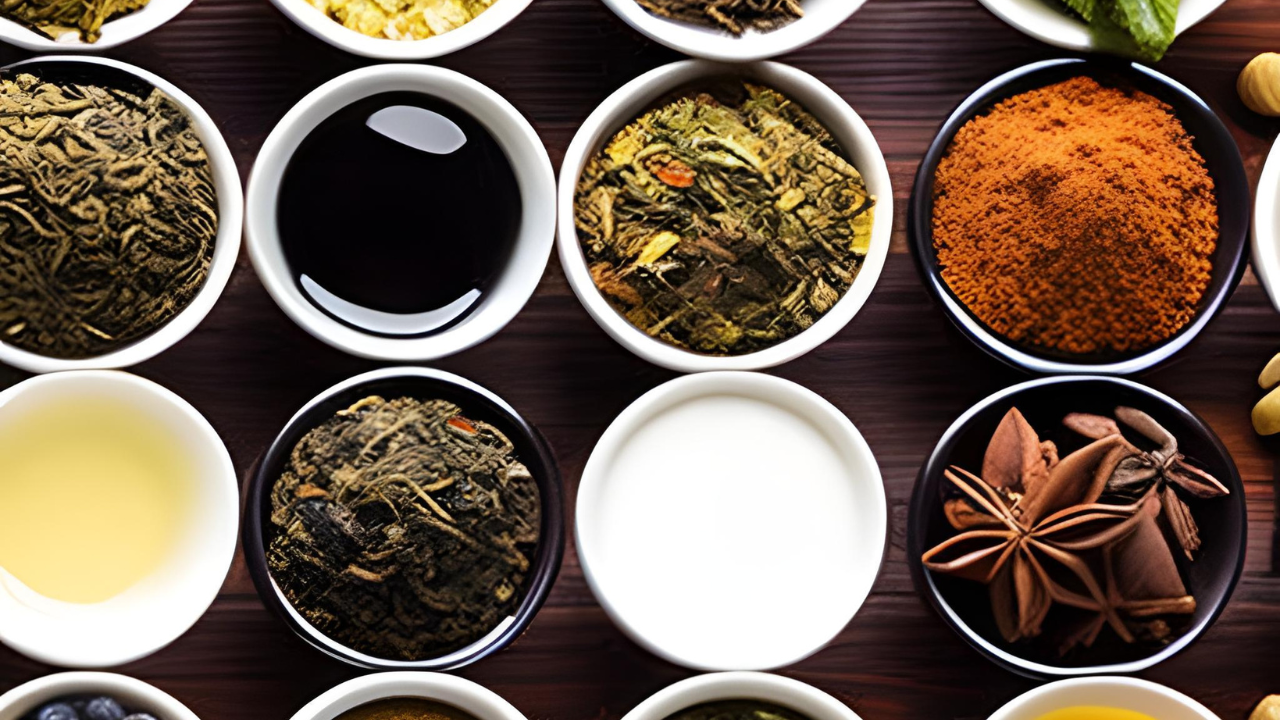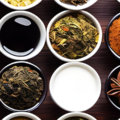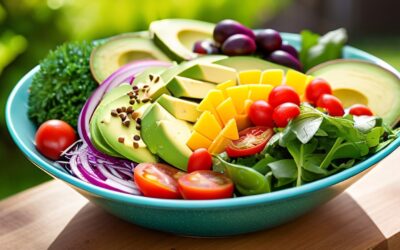Exploring Unique and Intriguing Varieties of Black Tea

Introduction: A Journey into the Enchanting World of Black Tea
As a tea lover, I’ve always been captivated by the vast and varied universe of black tea varieties.
Black tea started in ancient China and now drinks are enjoyed worldwide. History whispers from every corner, and your taste buds are in for a delightful adventure with all the different dishes.
Consider this your ticket to a flavor trip. We’re showing you all sorts of black teas, from everyday favorites to those special, hard-to-find kinds.
The Origin and History of Black Tea: From Ancient China to Global Phenomenon
The tea history of black tea traces back to ancient China, where it was initially known as “red tea” due to the color of the brewed liquor. Derived from the Camellia sinensis plant, black tea owes its bold flavor and deep color to the oxidation process, making it a fully oxidized tea.
Legend suggests that black tea was discovered by accident when tea leaves were left to oxidize, resulting in a darker, stronger brew.
Black tea reached Europe in the 1600s, and folks instantly took to it. This particular custom deeply embedded itself in British tea culture, subsequently radiating its pleasant allure across the entire planet.
Its bold flavor and ability to last a long time quickly made this drink a favorite everywhere. Each place then cooked up its own special tea customs.
More than just a drink, tea commerce helped define how nations interacted financially and exchanged their customs.
The Unique Varieties of Black Tea: A World of Flavor
From the malty notes of Assam black tea to the floral delicacy of Darjeeling tea, black teas each have their own character. When you look past the usual teas, you find so many amazing and intricate tastes from different growing areas.
Mainstream Black Tea Types:
-
Assam (India): Malty, brisk, full-bodied.
-
Darjeeling (India): Floral, fruity, light-bodied; often called the “Champagne of Teas.”
-
Ceylon black tea (Sri Lanka): Bright, citrusy, medium-bodied.
-
Earl Grey tea (Blend): Black tea infused with bergamot oil; citrusy and aromatic.
-
Keemun black tea (China): Malty, rich, smooth.
-
English Breakfast Tea (Blend): Robust, full-bodied blend, often including Assam, Ceylon, and Kenyan teas.
-
Irish Breakfast Tea (Blend): Strong, malty blend, typically featuring Assam tea.
Rare and Intriguing Black Teas:
-
Lapsang Souchong (China): Smoky black tea, traditionally dried over pinewood fires.
-
Yunnan black tea (China): Sweet, fruity, with subtle chocolate notes.
-
Nilgiri black tea (South India): Spicy, fragrant, and balanced.
-
Vietnamese Black Teas: Fruity or malty depending on the region.
-
Indonesian Black Teas: Earthy and bold.
-
Jin Jun Mei (China): Premium tea with a rich aroma and golden tips.
-
Dianhong tea (Yunnan, China): Its golden ends and savor the wonderfully gentle taste..
-
Jiuqu Hongmei (China): A rare, high-quality black tea with a complex flavor profile.
Intriguing Flavors and Aromas: A Sensory Experience
Black tea’s flavors are shaped by growing region, tea processing methods, and craftsmanship.
From floral notes to smoky undertones, woody to honeyed, each tea offers its own sensory journey.
The subtle fragrance that rises as your drink steeps gradually forms a rich, evolving bouquet. This aromatic journey significantly heightens the satisfaction found in every single cup.
The soil and weather in different tea gardens truly shape the distinct flavor of every black tea.
Health and Wellness Aspects of Black Tea
Black tea has long been studied for its potential health benefits. Inside, you’ll find natural compounds—polyphenols and flavonoids—that actively neutralize harmful free radicals.
Science suggests that enjoying black tea in reasonable amounts… mayYour heart will thank you, your mind will feel clearer, and you’ll just feel better overall.
Research indicates that black tea can improve endothelial function, which helps maintain healthy blood vessels (PubMed 11447078), may modestly reduce blood pressure (PubMed 32507441), and is associated with a lower risk of cardiovascular events (PMC 8366653).
The caffeine content in black tea can vary, but it generally provides a gentle energy boost.The research isn’t done, and what helps one person might not work for another at all.
Key note: Black tea should be enjoyed as part of a balanced lifestyle and not as a substitute for medical treatment.
The Art of Preparing and Serving Black Tea
How you brew matters. It completely changes your tea. The right water temperature and steeping time bring out the best in each variety:
-
Assam: 212°F (100°C) for 3–5 minutes.
-
Darjeeling: 200°F (93°C) for 2–3 minutes.
-
Ceylon: 212°F (100°C) for 3–5 minutes.
-
Lapsang Souchong: 212°F (100°C) for 3–5 minutes.
Loose-leaf teas allow fuller flavor extraction, and brewing vessels like teapots, infusers, or gaiwans add to the ritual. Heat the water. Pour your cup. Every action feels good.
To preserve the quality of your tea, store it in an airtight container away from light and moisture.
Black tea: A cultural cornerstone
Folks worldwide really care about their tea customs.
-
In China, black tea plays a role in intricate tea ceremonies, blending art, nature, and spirituality.
-
In India, regions like Assam and Darjeeling weave tea into community life and daily rhythms.
-
In the UK, British tea traditions like afternoon tea—with finger sandwiches and pastries—embody refinement and social connection.
-
In the West, sharing a pot of tea is often a chance to relax and connect with others, whether as a morning tea ritual or an afternoon break.
Pairing Black Tea with Food: A Symphony of Flavors
The right pairing enhances both the food and the tea:
-
Assam: Perfect with hearty breakfasts, spicy foods, and rich desserts.
-
Darjeeling: Complements fruit salads, pastries, and delicate sandwiches.
-
Ceylon: Versatile with both sweet and savory dishes.
-
Earl Grey: Lovely with citrusy desserts, scones, and shortbread.
-
Lapsang Souchong: Matches smoked meats, bold cheeses, and dark chocolate.
Experiment with milk tea variations or try iced tea for a refreshing twist on traditional pairings.
Buying Quality Black Tea
To find distinctive teas:
-
Choose loose-leaf teas for better flavor.
-
Check the origin, as terroir influences taste.
-
Find out everything. Consult those with shared passions.
-
Buy from reputable tea merchants or estates.
-
Learn about grading systems (e.g., Flowery Orange Pekoe, Tippy Golden Flowery Orange Pekoe) for quality markers.
Visiting plantations or local tea markets can also provide firsthand appreciation of the craft and culture behind each cup of premium tea.
Black Tea in Culinary and Lifestyle Applications
Beyond drinking, black tea is increasingly used in creative ways:
-
Culinary: Infusing desserts (like Earl Grey truffles) or savory dishes (such as tea-smoked duck).
-
DIY Wellness: Some use black tea in homemade scrubs, bath soaks, or hair rinses for a refreshing touch.
Heads-up: DIY uses are based on traditional practices; results may vary.
Conclusion: Embrace the World of Black Tea
Black tea is more than just a beverage—it’s history, culture, and creativity in a cup. You connect with culture. You even find a little creativity swirling there. Assam’s strong taste and Darjeeling’s delicate flowers give you a fresh feeling with every cup.
Whether enjoyed as a morning ritual, part of cultural tradition, or in a culinary experiment, black tea invites us to savor life more fully.
Call to Action: Let’s discover the enchantment of black tea, one cup at a time.
Visit specialty shops
Taste new varieties
Share experiences with fellow tea enthusiasts.
RELATED POSTS
Discover the Best Natural Remedies for Anxiety and How to Lower Stress
Discover natural remedies and simple ways to reduce anxiety and stress for a calmer, healthier mind and improved well-being.
30 Easy Healthy Meal Ideas for Breakfast, Lunch & Dinner
Discover 30 healthy meal ideas for breakfast, lunch, and dinner. Get easy, balanced recipes to boost energy, support weight loss, and improve overall health.
The Secret to a Vibrant Old Age? Strengthening Your Muscles!
Living a full life as you get older? It’s possible! Muscle growth starts now.
Imagine chasing after your grandkids or carrying groceries with ease.
FOLLOW DISCOVERY BLOGGER









0 Comments